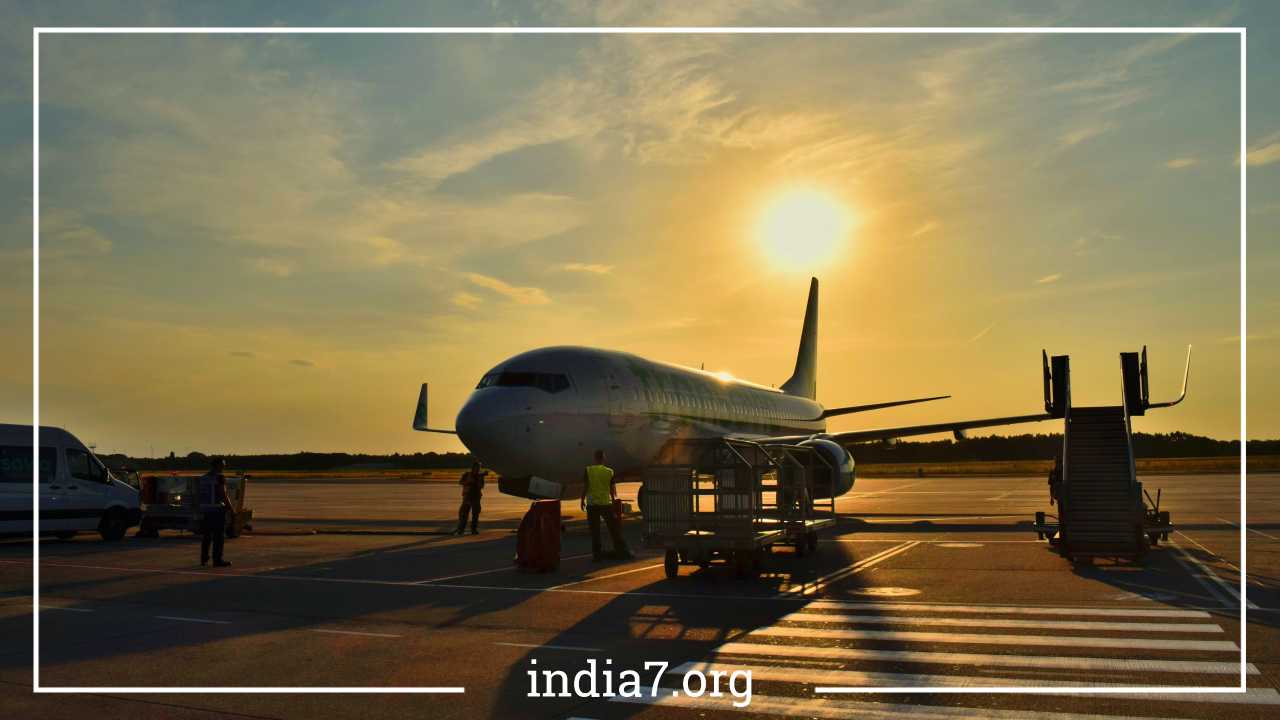Comprehensive Guide to Albany International Airport and International Travel

Albany International Airport
Are you an Albany, New York resident, especially one that has plans to fly out of the country? Whether you actually live in the Albany area or live in the surrounding areas, there is a good chance that you may need to use the services offered by the Albany International Airport. Whether you have already booked your flight or you are getting ready to, it may be a good idea to take the time to familiarize yourself with this popular airport.
As previously mentioned, the Albany International Airport is deemed a popular and well-known airport. Aside from the fact that the airport has arriving and departing international flights, the airport is also well-known for its location. Albany is the capital of New York State. For this reason, a large number of individuals, families, and business owners make use of the facility. When flying out of the Albany International Airport, you are advised to examine the airport as you would any other airport, including domestic airports. This may entail examining the security procedures, the airport layout, as well as the services offered by the airport.
Airlines Serving the Albany International Airport
Perhaps, the first thing that you should examine is the airlines that service the Albany International Airport, namely the ones that offer international flights. Although a number of airlines service the airport, you will find that most popular airlines include Northwest Airlines, United Airlines, and Air Canada. If you haven’t already booked a reservation on an international flight, this information will come in handy. It will prevent you from examining airlines that cannot provide you with what you need.
Northwest Airlines, now merged with Delta Air Lines, has been a significant carrier serving Albany International Airport. They have provided passengers with a wide range of destinations, both domestic and international. This airline’s comprehensive network has made it a preferred choice for travelers in the Albany area looking to go abroad.
United Airlines is another prominent carrier at Albany International Airport. With a vast route network, United offers flights to numerous international destinations, making it convenient for passengers in Albany and the surrounding areas to connect to international flights.
Air Canada is a well-regarded international carrier that serves Albany International Airport. It provides essential connectivity for travelers in the Albany region who are heading to Canada or looking to connect to other international destinations through Canadian hubs.
These airlines offer various options for international travel, so it’s a good idea to explore their services, flight schedules, and destinations when planning your trip. Having this information can be valuable when booking your flight, ensuring you choose an airline that aligns with your travel needs.
International Air Travel Safety, Rules, and Regulations
Once you have made your flight reservations, you can begin to focus on other aspects of your travel plans. One of the crucial aspects that you will want to focus on is international air travel safety, rules, and regulations. Unlike many domestic flights, there are some international flights that have additional rules and restrictions. These additional rules may include extra baggage screenings or the banning of items that are allowed on airplanes in other areas of the world, except for where you are going. It’s essential to be aware of these rules to ensure a smooth and hassle-free international travel experience.
International travel involves crossing borders, which means you’ll need to adhere to the rules and regulations of both your departure country (the United States, in this case) and your destination country. Here are some key points to consider regarding international air travel safety:
- Travel Documentation: Ensure you have all the necessary travel documents before heading to the airport. The exact requirements may vary depending on your destination, but common documents include a valid passport, visa (if required), certificate of citizenship, birth certificate, or social security card. In addition to these documents, you’ll typically need your driver’s license or government-issued identification card. It’s essential to verify the specific requirements for your destination well in advance of your travel date.
- Baggage Screening: International flights often have stricter baggage screening procedures than domestic flights. Be prepared for thorough checks of your checked baggage and carry-on items. Ensure that you’re not carrying any prohibited items or items that exceed the allowed quantities. Familiarize yourself with the Transportation Security Administration (TSA) guidelines for international travel, which can be found on their website at www.tsa.gov.
- Security Protocols: International airports typically have robust security measures in place. Expect to go through passport control and customs when departing the United States and when arriving at your international destination. These processes may involve document checks, interviews, and inspections of your baggage.
- Travel Alerts and Advisories: Stay informed about any travel alerts or advisories issued by the U.S. Department of State for your destination. These advisories provide information on potential risks, security concerns, and travel restrictions in specific countries. It’s advisable to check for updates regularly and adjust your travel plans accordingly if necessary.
- Health and Vaccinations: Depending on your destination, you may need to meet specific health requirements, such as vaccinations or medical screenings. Check with the Centers for Disease Control and Prevention (CDC) and the World Health Organization (WHO) for health-related travel guidelines.
- Currency and Financial Considerations: Familiarize yourself with the currency used in your destination country and ensure you have access to funds during your trip. Notify your bank or credit card provider about your travel plans to avoid issues with accessing your accounts abroad.
- Cultural Sensitivity: Research the cultural norms and customs of your destination to ensure you are respectful and adhere to local customs. This includes understanding appropriate dress codes, greetings, and social etiquette.
- Language: If you are traveling to a non-English-speaking country, consider learning basic phrases in the local language to facilitate communication and enhance your travel experience.
By being well-informed about international travel rules and regulations, you can reduce the chances of encountering problems or delays during your journey. Additionally, staying updated on travel advisories and taking necessary health precautions contributes to a safe and enjoyable travel experience.
Packing Essentials for International Travel
When packing for the Albany International Airport, it’s essential not only to leave behind prohibited items but also to bring along the necessary documents and items for your international trip. These items are crucial for clearing security checks and ensuring a smooth travel experience. Here’s a more detailed breakdown of what you should consider when packing for international travel:
- Travel Documents: As mentioned earlier, your travel documents are of utmost importance. Verify the specific requirements for your destination and ensure you have all the necessary documents, such as a valid passport, visa (if required), certificate of citizenship, birth certificate, social security card, and your driver’s license or government-issued identification card. Make photocopies or digital copies of these documents and store them separately from the originals in case of loss or theft.
- Travel Itinerary: Carry printed copies of your travel itinerary, including your flight tickets, hotel reservations, and any other booking confirmations. Having this information readily available can be helpful when navigating airports and interacting with immigration and customs officials.
- Medications: If you take prescription medications, ensure you have an ample supply to last the duration of your trip. Carry your medications in their original labeled containers to avoid any issues with customs. It’s also advisable to bring a copy of your prescription, just in case.
- Travel Insurance: Consider purchasing travel insurance to provide coverage for unexpected events, such as trip cancellations, medical emergencies, or lost luggage. Review the policy to understand what is covered and how to make claims if needed.
- Power Adapters and Voltage Converters: If your destination uses different types of electrical outlets or voltage, pack the necessary adapters and voltage converters to ensure you can charge your devices and appliances.
- Travel Wallet or Money Belt: Invest in a secure travel wallet or money belt to keep your essential documents, cash, and cards safe while exploring your destination. These items are particularly useful in crowded or touristy areas where pickpocketing may occur.
- Local Currency: Exchange some currency from your home country into the local currency of your destination before you leave. This ensures you have cash on hand for immediate expenses upon arrival, such as transportation from the airport.
- Travel Toiletries: Pack travel-sized toiletries, including essentials like toothpaste, shampoo, and soap. Be mindful of liquids and gels in your carry-on baggage, as they must adhere to the TSA’s restrictions on container size.
- Travel-sized First Aid Kit: Carry a basic first aid kit with items like adhesive bandages, pain relievers, antiseptic wipes, and any necessary personal medications.
- Travel Locks and Luggage Tags: Use TSA-approved locks to secure your luggage and prevent unauthorized access. Attach luggage tags with your contact information to help identify your bags in case they get lost.
- Clothing and Accessories: Pack appropriate clothing for your destination’s climate and activities. Consider versatile pieces that can be layered for varying weather conditions. Don’t forget essential accessories like sunglasses, a hat, and a reusable water bottle.
- Travel Entertainment: Bring along books, magazines, a tablet, or other forms of entertainment for long flights or layovers. Load your devices with movies, music, or e-books to stay entertained during your journey.
- Travel Adapter: If you plan to use electronic devices from your home country while abroad, ensure you have the appropriate travel adapter to plug them into foreign outlets.
- Important Contact Information: Create a list of important contact information, including the contact details of your country’s embassy or consulate in your destination. Share this information with a trusted friend or family member back home.
- Travel Snacks: Pack some snacks for your journey, especially if you have dietary preferences or restrictions. Having a few snacks on hand can keep hunger at bay during long flights or unexpected delays.
By packing these essentials and following international travel guidelines, you can be well-prepared for your journey from Albany International Airport and ensure a smooth transition through security and customs.
Navigating Albany International Airport
If you have never been to the Albany International Airport before, you may wish to familiarize yourself with the layout of the airport. This will not only help to ensure that you know where you are going but also where you can find restaurants, bathrooms, and onsite retail stores. With a number of different airport terminals and parking centers, the Albany International Airport could be difficult to navigate, especially for those who are first-time visitors. For those reasons, you may want to view an online map of the establishment. You can find this map by visiting www.albanyairport.com.
Understanding the layout and facilities of Albany International Airport can significantly enhance your travel experience. Here are some key points to consider when navigating the airport:
- Airport Terminals: Albany International Airport consists of multiple terminals, each serving different airlines and destinations. Familiarize yourself with the terminal that corresponds to your airline and destination to streamline the check-in and boarding processes.
- Security Checkpoints: Be prepared for security screenings when entering the airport. Ensure you arrive with ample time before your flight to allow for security checks. Remove items from your carry-on baggage as required and follow TSA guidelines to expedite the process.
- Parking Options: Albany International Airport offers various parking options, including short-term and long-term parking lots. Determine your parking needs in advance and choose a parking area that suits your travel duration.
- Ground Transportation: Explore ground transportation options available from the airport to your final destination, whether it’s a hotel, a rental car, or public transportation. Familiarize yourself with airport shuttle services, taxi stands, and ride-sharing pick-up locations.
- Amenities: Albany International Airport provides various amenities for travelers, such as restaurants, cafes, shops, and lounges. Check the airport’s website or terminal maps to locate these facilities and plan your dining and shopping accordingly.
- Airport Information Desks: If you have any questions or need assistance, consider visiting the airport’s information desks. Airport staff can provide guidance on airport facilities, transportation options, and other traveler services.
- Flight Information: Stay informed about your flight’s status by checking flight information displays located throughout the terminals. These displays provide updates on departure gates, boarding times, and delays.
- Wi-Fi and Charging Stations: Look for Wi-Fi hotspots and charging stations if you need to stay connected or charge your electronic devices while waiting for your flight.
- Accessibility Services: Albany International Airport offers services for passengers with disabilities. These services may include accessible restrooms, elevators, and assistance with boarding and deplaning.
- Lost and Found: In case you misplace any belongings at the airport, contact the Lost and Found department for assistance in locating and retrieving your items.
By taking the time to understand the airport layout and available services, you can navigate Albany International Airport with confidence and minimize stress during your travel experience.
Additional Information and Resources
In addition to getting an online map of the Albany International Airport, you can also learn other information that you may have previously been unaware of. Whether this information solely focuses on the Albany International Airport or is general information on international air travel, it is likely that this information will come be useful to you, if not now then in the future.
- Airport Website: Visit the official website of Albany International Airport at www.albanyairport.com. The website provides valuable information on airport services, flight schedules, parking options, and terminal maps. You can also find updates on any ongoing construction or renovations that may affect your travel experience.
- Transportation Security Administration (TSA): The TSA website (www.tsa.gov) offers comprehensive information on airport security procedures, travel regulations, and tips for a smooth journey. You can find details on what items are allowed in carry-on and checked baggage, as well as travel restrictions and guidelines.
- U.S. Department of State: The U.S. Department of State’s website (www.state.gov) provides travel advisories, passport and visa information, and embassy or consulate contact details for destinations worldwide. Check for travel alerts and country-specific information for your international trip.
- Centers for Disease Control and Prevention (CDC): For health-related travel information, including vaccinations and health precautions, visit the CDC’s travel website (www.cdc.gov/travel). It offers guidance on staying healthy while traveling abroad.
- Airlines’ Official Websites: Explore the official websites of the airlines serving Albany International Airport, such as Northwest Airlines (now part of Delta Air Lines), United Airlines, and Air Canada. These websites offer detailed information on flight schedules, baggage policies, and in-flight services.
- Travel Forums and Blogs: Consider reading travel forums and blogs where fellow travelers share their experiences, tips, and recommendations for international travel. These online communities can provide valuable insights and advice for a successful trip.
- Travel Apps: Download travel apps for your smartphone or tablet to access real-time flight information, check-in online, and receive notifications about your journey. Popular travel apps include airline-specific apps, flight tracking apps, and travel planning tools.
- Currency Exchange Information: If you need to exchange currency before your trip, research the current exchange rates and fees at local banks or currency exchange offices. You can also use currency conversion apps to calculate exchange rates.
- Local Tourist Information: Find information about your destination, including local attractions, cultural events, and dining options. Tourist information centers and official tourism websites for your destination can provide insights into things to do and see.
- Travel Insurance Providers: If you opt for travel insurance, visit the website of your chosen insurance provider to review your policy coverage, terms, and contact information in case of emergencies.
By accessing these resources and staying informed, you can enhance your travel knowledge and ensure a well-prepared and enjoyable international journey from Albany International Airport.
In conclusion, Albany International Airport serves as a gateway for travelers from the Albany, New York region to explore international destinations. To make the most of your international travel experience, it’s essential to be well-prepared and informed about airlines, travel regulations, documentation requirements, and airport facilities. By following these guidelines and utilizing available resources, you can navigate the airport with ease, comply with international travel rules, and embark on a memorable and stress-free journey to your chosen international destination.”



